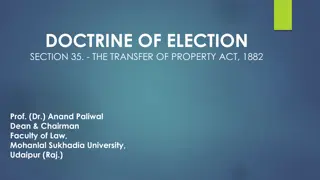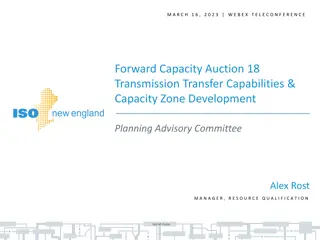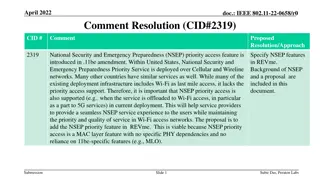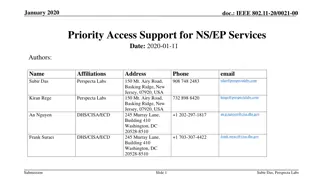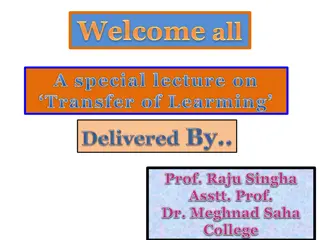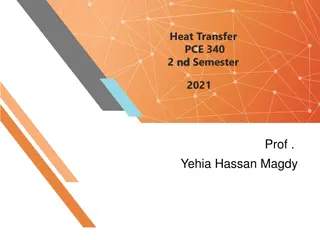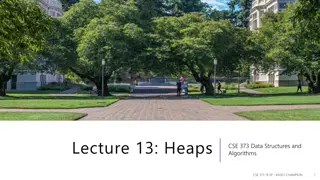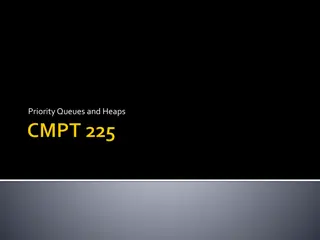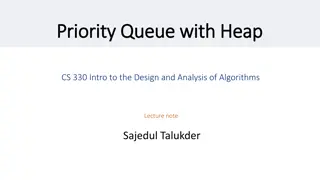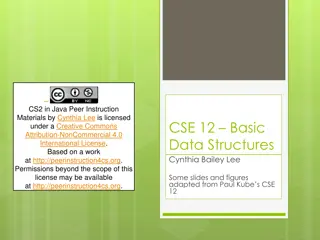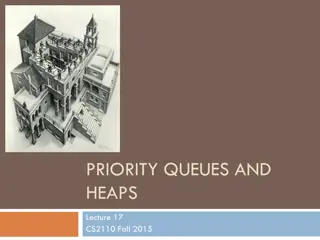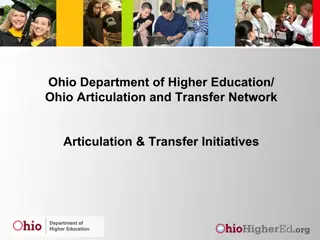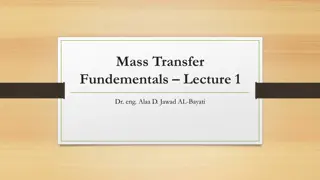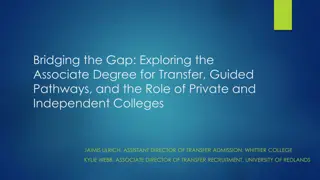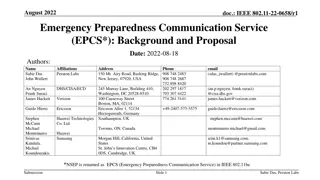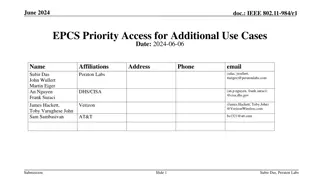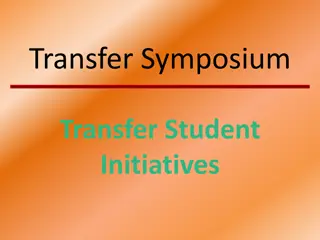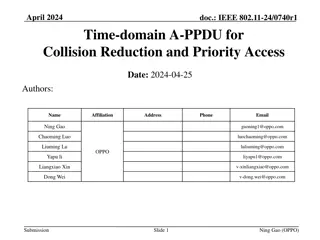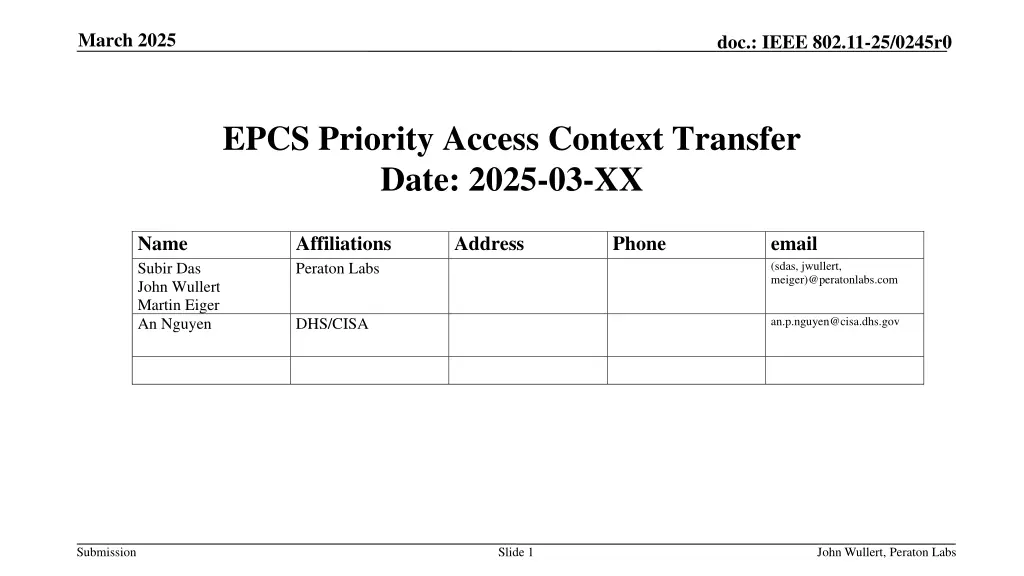
Seamless Roaming Context Transfer in IEEE 802.11-25
Explore the importance of transferring context for EPCS Priority Access during seamless roaming in the IEEE 802.11-25 standard. Learn about motions, contributions, and procedures involved in ensuring preferential channel access for emergency and mission-critical users.
Download Presentation

Please find below an Image/Link to download the presentation.
The content on the website is provided AS IS for your information and personal use only. It may not be sold, licensed, or shared on other websites without obtaining consent from the author. If you encounter any issues during the download, it is possible that the publisher has removed the file from their server.
You are allowed to download the files provided on this website for personal or commercial use, subject to the condition that they are used lawfully. All files are the property of their respective owners.
The content on the website is provided AS IS for your information and personal use only. It may not be sold, licensed, or shared on other websites without obtaining consent from the author.
E N D
Presentation Transcript
March 2025 doc.: IEEE 802.11-25/0245r0 EPCS Priority Access Context Transfer Date: 2025-03-XX Name Subir Das John Wullert Martin Eiger An Nguyen Affiliations Peraton Labs Address Phone email (sdas, jwullert, meiger)@peratonlabs.com an.p.nguyen@cisa.dhs.gov DHS/CISA Submission Slide 1 John Wullert, Peraton Labs
March 2025 doc.: IEEE 802.11-25/0245r0 Abstract This presentation discusses the need for transferring context related to EPCS Priority Access during seamless roaming and describes the context that needs to be transferred Submission Slide 2 John Wullert, Peraton Labs
March 2025 doc.: IEEE 802.11-25/0245r0 Background Emergency Preparedness Communications Service (EPCS) priority access features were specified in IEEE 802.11be [1] to provide preferential channel access to authorized users Preferential access helps ensure that individuals with emergency and mission critical responsibilities can communicate even when Wi-Fi network access channel is congested AP MLDs grant priority channel access via affiliated APs after verifying that non-AP MLDs have the authority to use the EPCS features Submission Slide 3 John Wullert, Peraton Labs
March 2025 doc.: IEEE 802.11-25/0245r0 Context in Seamless Roaming Motions Motion 26 describes a seamless roaming mechanism including context transfer (details of mechanism and context to be transferred are TBD) Motion 44 indicates frame to initiate roaming with context transfer (context is TBD) Motion 162 describes roaming preparation phase, including transfer/renegotiation of context Motion 282 describes ability for non-AP MLD to send request to current AP MLD to determine what context transfer (Context is TBD) Motion 283 describes seamless roaming procedure, including transfer of context (whether/how context is negotiated is TBD) Submission Slide 4 John Wullert, Peraton Labs
March 2025 doc.: IEEE 802.11-25/0245r0 Context Transfer in Contributions Numerous contributions have discussed context transfer in seamless roaming 11-24/0052 assumes context can be transferred via backhaul 11-24/0480 suggests procedures and signaling for context transfer 11-24/0830 proposes transfer of essential context to continue UL and DL operation 11-24/1425 describes a pre-roam feasibility check to ensure target can accept full context 11-24/1476 describes how APs may determine whether to transfer or renegotiate context 11-24/1516 describes context transfer/renegotiation and over-the-air/over-the-ds context transfer 11-24/1595 describes need for MLME interface to facilitate context transfer 11-24/1812 describes proactive transfer of static context and fetching of dynamic context 11-24/1851 describes transferring static context and per-TID dynamic context 11-24/1883 describes context transfer for AP MLDs in same seamless mobility domain 11-25/0040 proposes that Current AP MLD retains context for period to reduce overhead for ping- pong transitions and that context transfer results (success/failure) be reported to non-AP MLD Submission Slide 5 John Wullert, Peraton Labs
March 2025 doc.: IEEE 802.11-25/0245r0 EPCS Context for Seamless Roaming Context associated with EPCS involves two aspects Authorization to use EPCS Use of EPCS is restricted to authorized non-AP MLDs Authorization process involves interactions with external entity (e.g., remote AAA server) Performing authorization post-transition would result in significant delay and prevent a seamless transition Current EPCS state A non-AP MLD authorized for EPCS might have EPCS in the enabled or torn-down state prior to a BSS transition Loss of enabled state information during transition would cause EPCS to be disabled Transferring context related to EPCS priority access during BSS transition can address these issues and seamless experience for EPCS users Submission Slide 6 John Wullert, Peraton Labs
March 2025 doc.: IEEE 802.11-25/0245r0 EPCS Authorization during BSS Transition If Current AP MLD and Target AP MLD are in same seamless mobility domain, Current AP MLD could transfer the EPCS authorization information directly to Target AP MLD Avoids need for Target AP MLD to reach out to external server, simplifying transition Note: dot11EPCSPriorityAccessAuthorized is stored in dot11Interworking table. Current spec indicates that dot11Interworking table is moved to new AP during BSS transition [2] This is static context that can be transferred during preparation phase If this transfer is not supported, need to enable Target AP MLD to perform EPCS authorization Given potential delay, it is preferable that this authorization step happens during the preparation phase If Current AP MLD collected EPCS-relevant credentials from non-AP MLD, need to pass them to Target AP MLD Submission Slide 7 John Wullert, Peraton Labs
March 2025 doc.: IEEE 802.11-25/0245r0 EPCS State during BSS Transition Loss of state information during transition would have several undesirable effects Lack of priority treatment in Target BSS could adversely affect continuity of communications If transition is otherwise seamless, user might be unaware that EPCS priority access is no longer active Even if user was informed, would be burdened with re-enabling after each transition It is desirable to retain EPCS state information across transitions Current AP MLD should inform Target AP MLD of EPCS priority access state This context is more dynamic than authorization, so might be preferable to transfer during roaming phase Note: Target AP MLD needs to inform non-AP MLD of EPCS EDCA parameters to use One option is to have Target AP MLD automatically send unsolicited EPCS Priority Access Enable Response frame with EDCA parameters to non-AP MLD immediately after reassociation when EPCS is enabled Submission Slide 8 John Wullert, Peraton Labs
March 2025 doc.: IEEE 802.11-25/0245r0 Summary EPCS priority access provides preferential treatment that should be retained to ensure seamless BSS transitions for authorized users Context transfer of EPCS priority access needs to include both EPCS priority access authorization information and current EPCS priority access state Submission Slide 9 John Wullert, Peraton Labs
March 2025 doc.: IEEE 802.11-25/0245r0 Straw Poll -1 SP1: Do you agree to include EPCS priority access authorization and state information as part of Seamless Roaming context transfer? Notes: 1. Feature is optional only supported by devices supporting Seamless Roaming and EPCS. 2. Specific details of context to be transferred and the phase during which it is transferred are TBD. Y N - A - Submission Slide 10 John Wullert, Peraton Labs
March 2025 doc.: IEEE 802.11-25/0245r0 References 1. IEEE 802.11be Draft 7.0: See clauses 4.5.13 and 35.16. https://ieee802.org/11/private/Draft_Standards/11be/Draft%20P802.11be_D7.0.pdf 2. IEEE 802.11REVme Draft 7.0: See Annex C: ASN.1 encoding of the MAC and PHY MIB, entry for dot11Interworking TABLE, page 5764-5765 https://ieee802.org/11/private/Draft_Standards/11me/Draft%20P802.11REVme_D7.0.pdf Submission Slide 11 John Wullert, Peraton Labs


